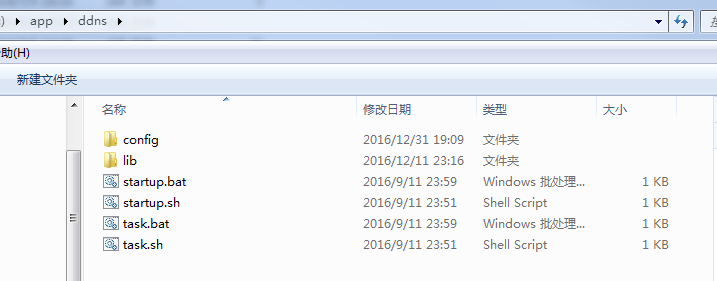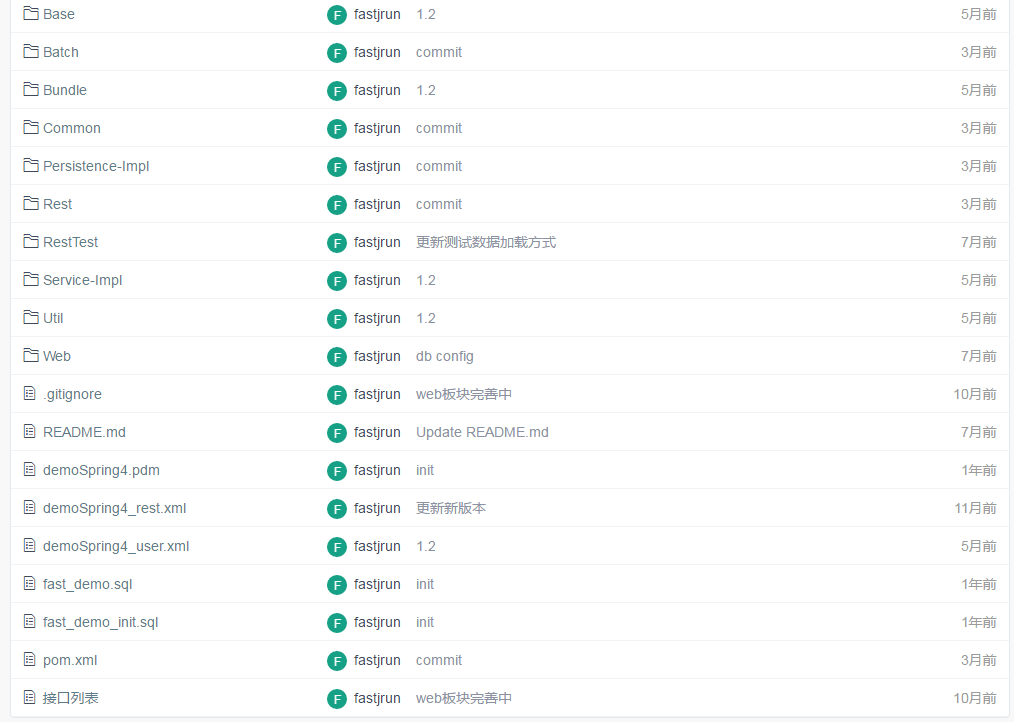【乾貨】常用maven外掛總結
maven是目前java專案中比較流行的構建工具,特別是它提供的外掛,如果使用得當,整個專案研發流程都將會受益,從而提高研發、測試和部署的效率。這裡記錄幾個常用外掛的用法,既方便自己日後回顧,也便於有興趣的同仁交流指正。各位實踐過程中如果發現有趣的外掛或者更好的用法,也歡迎留言分享。
Maven工程標準架構
| 目錄 | 備註 |
|---|---|
| ${basedir} | 存放 pom.xml和所有的子目錄 |
| ${basedir}/src/main/resources | 專案的資源,如spring配置檔案,properties資原始檔等 |
| ${basedir}/src/main/webapps | web專案特有 |
| ${basedir}/src/test/java | 專案的測試類,比如說 JUnit程式碼、TestNg程式碼 |
| ${basedir}/src/test/resources | 測試程式碼使用的資源 |
外掛一 maven-resources-plugin
Maven可以區別對待Java程式碼檔案和資原始檔,預設的主資原始檔目錄是src/main/resources,我們可以通過這個外掛實現資原始檔過濾。資原始檔過濾的意思是指我們可以在資原始檔裡用使用佔位符${propertyName},然後開啟對資原始檔的過濾,pom.xml裡再統一設定所有{propertyName}對應的值,就可以在構建過程中將值替換掉資原始檔中對應的${propertyName},實現了程式碼配置分離、做到了引數的統一維護。
示例用法
<resources>
<resource>
<directory>src/main/resources</directory>
<includes>
<include>properties/*.properties</include>
</includes>
<filtering>true</filtering>
</resource>
<resource>
<directory>src/main/resources</directory>
<includes>
<include>*.xml</include>
<include>mapper/**/*.xml</include>
<include>mysqlMapper/**/*.xml</include>
<include>*.properties</include>
</includes>
</resource>
</resources>
……
<properties>
<runtime.env>local</runtime.env>
</properties>
我們的主應用整合後,會根據實際要求部署到不同的環境中,比如聯調環境、測試環境、壓力環境、預釋出環境、生產環境等,而這些環境上的資源配置資訊顯然是不一樣的,針對每套環境,每個具體佔位符${propertyName}都會有不同的值,而這種場景可以使用Maven的profile來支援,每個profile都可以獨立維護一套引數值,在mvn package的時候靈活指定;此外,maven也支援在package的時候指定多個profile,這個特性在執行自動部署的時候特別有用。使用這個外掛,我們的專案可以做到多環境支援,參考命令
mvn package -Pnocheck,env-test
示例用法
<profiles>
<profile>
<id>nocheck</id>
<properties>
<skipTests>true</skipTests>
<checkstyle.skip>true</checkstyle.skip>
<license.skip>true</license.skip>
<notice.skip>true</notice.skip>
<versions.skip>true</versions.skip>
</properties>
</profile>
<profile>
<!-- 本地環境,預設是windows -->
<id>local</id>
<activation>
<activeByDefault>true</activeByDefault>
</activation>
<properties>
<runtime.env>local</runtime.env>
</properties>
</profile>
<profile>
<id>env-test</id>
<properties>
<runtime.env>env-test</runtime.env>
</properties>
</profile>
</profiles>
外掛二 maven-jar-plugin
當我們將專案模組化後,有一些通用的資原始檔基本上大多數模組都會用到,比如log4j.properties,jdbc.properties等,模組中有了這些資原始檔,我們才能單獨對該模組進行開發、除錯。預設情況下maven-jar-plugin會將這些資原始檔全部package成一個jar包進行釋出,如果這樣的jar包整合到一個主應用中部署,執行,很可能導致主應用的配置不生效,我稱之為配置混亂,為了解決這個問題,可以開啟maven-jar-plugin的排除功能,在執行mvn package之前排除指定的資原始檔。
示例用法
<plugin>
<groupId>org.apache.maven.plugins</groupId>
<artifactId>maven-jar-plugin</artifactId>
<configuration>
<excludes>
<exclude>applicationContext.xml</exclude>
<exclude>properties/**</exclude>
<exclude>log4j.properties</exclude>
</excludes>
</configuration>
</plugin>
外掛三 maven-war-plugin
專案如果是web主應用,我們可以使用maven-war-plugin來對webapps下各類檔案進行過濾。用法參考maven-resources-plugin
示例用法
<plugin>
<groupId>org.apache.maven.plugins</groupId>
<artifactId>maven-war-plugin</artifactId>
<configuration>
<warName>demo-Rest</warName>
<webResources>
<resource>
<directory>src/main/webapp/WEB-INF</directory>
<filtering>true</filtering>
<targetPath>WEB-INF</targetPath>
<includes>
<include>web.xml</include>
</includes>
</resource>
</webResources>
</configuration>
</plugin>
外掛四 properties-maven-plugin
隨著專案的不斷迭代,我們的資源配置項將會變得更多,這個會直接影響到pom.xml的體積膨脹;此外,如果專案目標部署環境比較多,pom.xml將會膨脹得更快,更加難以維護。為了解決這個問題,我們需要將這些配置資訊獨立出來,並按照不同環境進行歸類,使用properties-maven-plugin就會達到這個效果。
示例用法(將每個環境的資訊放在不同的目錄下,然後在mvn package切換不同的profile實現去指定目錄讀取配置資訊,用讀取到的value去替換資源配置檔案的佔位符)
<plugin>
<groupId>org.codehaus.mojo</groupId>
<artifactId>properties-maven-plugin</artifactId>
<version>1.0.0</version>
<configuration>
<files>
<file>profiles/${runtime.env}/jdbc.properties</file>
<file>profiles/${runtime.env}/redis.properties</file>
<file>profiles/${runtime.env}/batch.properties</file>
<file>profiles/${runtime.env}/config.properties</file>
</files>
</configuration>
<executions>
<execution>
<phase>initialize</phase>
<goals>
<goal>read-project-properties</goal>
</goals>
</execution>
</executions>
</plugin>
外掛五 maven-assembly-plugin
Java專案中有一種型別的主應用,是需要獨立部署在後臺啟動的,比如socket服務程式,比如定時排程程式,比如dubbo服務程式,這些程式理論上只需要執行一個簡單的java命令即可;稍微複雜一些的,我們可以規範一下自己的主應用結構,定義配置資料夾和依賴庫資料夾,再準備啟動的批處理指令碼sh或bat檔案即可。使用maven-assembly-plugin就可以達到這種效果。
示例用法
<plugin>
<groupId>org.apache.maven.plugins</groupId>
<artifactId>maven-assembly-plugin</artifactId>
<configuration>
<appendAssemblyId>false</appendAssemblyId>
<descriptors>
<descriptor>target/classes/package.xml</descriptor>
</descriptors>
</configuration>
<executions>
<execution>
<id>make-assembly</id>
<phase>package</phase>
<goals>
<goal>single</goal>
</goals>
</execution>
</executions>
</plugin>
附package.xml
<assembly
xmlns="http://maven.apache.org/plugins/maven-assembly-plugin/assembly/1.1.2"xmlns:xsi="http://www.w3.org/2001/XMLSchema-instance"xsi:schemaLocation="http://maven.apache.org/plugins/maven-assembly-plugin/assembly/1.1.2 http://maven.apache.org/xsd/assembly-1.1.2.xsd">
<id>package</id>
<formats>
<format>tar.gz</format>
</formats>
<includeBaseDirectory>true</includeBaseDirectory>
<fileSets>
<fileSet>
<directory>src/main/bin</directory>
<includes>
<include>*.sh</include>
<include>*.bat</include>
</includes>
<filtered>true</filtered>
<outputDirectory></outputDirectory>
<fileMode>0755</fileMode>
</fileSet>
<fileSet>
<directory>${basedir}/src/main/config</directory>
<includes>
<include>*.properties</include>
<include>log4j.xml</include>
</includes>
<outputDirectory>config</outputDirectory>
<filtered>true</filtered>
<fileMode>0644</fileMode>
</fileSet>
<fileSet>
<directory>${basedir}/src/main/config</directory>
<includes>
<include>log4j.dtd</include>
</includes>
<outputDirectory>config</outputDirectory>
<fileMode>0644</fileMode>
</fileSet>
</fileSets>
<dependencySets>
<dependencySet>
<outputDirectory>lib</outputDirectory>
<scope>runtime</scope>
<fileMode>0644</fileMode>
</dependencySet>
</dependencySets>
</assembly>
附示例生成的Java應用結構圖

外掛六 maven-shade-plugin
有時候,我們需要將所有配置檔案和依賴庫檔案全部放在一個jar包中,運維的同事只需要執行java -jar batch.jar即可完成啟動。雖然使用maven-assembly-plugin也可以做到這一點,但是在讀取配置檔案的時候有可能會遇到一些問題,這個時候,我們可能需要使用到maven-shade-plugin這個外掛,經筆者實踐按照如下示例用法配置確實可用;當然本示例配置了mainClass,直接執行java -jar batch.jar確實沒問題,但如果執行java com.fastjrun.demospring4.BatchInit -classpath batch.jar也是可以的。
示例用法
<plugin>
<groupId>org.apache.maven.plugins</groupId>
<artifactId>maven-shade-plugin</artifactId>
<version>3.0.0</version>
<executions>
<execution>
<phase>package</phase>
<goals>
<goal>shade</goal>
</goals>
<configuration>
<finalName>batch</finalName>
<shadedArtifactAttached>true</shadedArtifactAttached>
<shadedClassifierName>jar-with-dependencies</shadedClassifierName>
<transformers>
<transformer
implementation="org.apache.maven.plugins.shade.resource.ManifestResourceTransformer">
<mainClass>com.fastjrun.demospring4.BatchInit</mainClass></transformer>
<transformer
implementation="org.apache.maven.plugins.shade.resource.AppendingTransformer">
<resource>META-INF/spring.handlers</resource>
</transformer>
<transformer
implementation="org.apache.maven.plugins.shade.resource.AppendingTransformer">
<resource>META-INF/spring.schemas</resource>
</transformer>
<transformer
implementation="org.apache.maven.plugins.shade.resource.AppendingTransformer">
<resource>META-INF/spring.tooling</resource>
</transformer>
</transformers>
<filters>
<filter>
<artifact>*:*</artifact>
<excludes>
<exclude>META-INF/*.SF</exclude>
<exclude>META-INF/*.DSA</exclude>
<exclude>META-INF/*.RSA</exclude>
</excludes>
</filter>
</filters>
</configuration>
</execution>
</executions>
</plugin>
外掛七 versions-maven-plugin
當專案模組化後,我們會遇到一個問題,就是專案版本升級的時候,需要同時變更父模組和所有子模組中的版本號 ,而這是一個比較瑣碎且容易出錯的事情,還好maven考慮得很周到,提供了這樣一個外掛,我們使用命令列就可以達到效果了。我們的專案檢視如下

參考命令如下
mvn versions:set-DnewVersion=1.2-SNAPSHOT
總結
本文彙總了筆者常用的幾個外掛及其用法,經實踐,基於eclipse的kepler、luna版本都能很好支援maven-resources-plugin、maven-jar-plugin、maven-war-plugin和properties-maven-plugin使用,同時也支援profile的activeByDefault設定,研發同事在不需要任何調整的情況下就能直接開發、除錯程式碼,且在開發結束後,可以直接使用mvn命令打包,打出各個環境的部署程式。從開發、除錯、測試、驗證到上線的整個過程,所有模組的pom.xml直到下一個迭代變更版本前都不用修改,直接使用。
相關文章
- Maven的常用外掛Maven
- Emmet外掛常用語法總結
- 乾貨|神器 谷歌Chrome外掛大全谷歌Chrome
- 常用Maven外掛介紹(轉載)Maven
- Canvas乾貨總結Canvas
- Maven 常用技巧總結Maven
- Maven 外掛Maven
- 前端開發常用的VS Code外掛總結前端
- Web測試乾貨總結Web
- Maven--外掛Maven
- maven外掛配置Maven
- Jib使用小結(Maven外掛版)Maven
- [乾貨]谷歌外掛跨域你可以瞭解下谷歌跨域
- React Native純乾貨總結React Native
- 「硬核乾貨」總結 IDEA 開發的26個常用設定Idea
- Maven配置 Jetty 外掛MavenJetty
- maven Multiple sourceDirectory外掛Maven
- Python那些事——超級乾貨,python常用函式大總結Python函式
- 乾貨來了:Chrome常用快捷鍵整理彙總Chrome
- 關於PaaS的純乾貨總結
- 乾貨分享:vue2.0做移動端開發用到的相關外掛和經驗總結(2)Vue
- 乾貨分享:vue2.0做移動端開發用到的相關外掛和經驗總結(更新)Vue
- 前端常用外掛、工具類庫彙總前端
- webpack 外掛總結歸類Web
- Maven外掛開發教程Maven
- MybatisGenerator的Maven外掛配置MyBatisMaven
- Maven Assembly外掛介紹Maven
- Maven外掛執行方式Maven
- VSCode外掛開發全攻略(九)常用API總結VSCodeAPI
- 自媒體工具有哪些,乾貨總結
- [乾貨] 位運算面試題大總結面試題
- [乾貨] 線段樹知識點總結
- 前端常用外掛、工具類庫彙總(下)前端
- 前端常用外掛、工具類庫彙總(上)前端
- select2外掛常用方法彙總
- 【Maven實戰技巧】「外掛使用專題」Maven-Archetype外掛建立自定義maven專案骨架Maven
- Eclipse外掛安裝總結Eclipse
- 總結常用的掛馬程式碼